One of the key differences between a good shot and a great shot is that the great shot will tell a story. When we think of a story, we immediately think of a book or a film. A linear journey through a series of events.
But how can we tell a story in a single two-dimensional image? Surely that’s not possible. It is if you think a little outside of the box. If we take away our preconceived ideas of what a story is, then it’s perfectly possible to tell a story in a single image. Today we are going to take a look at how to do that.
The Composition Is The Storyline
The key concept of a composition is to lead the eye through a photo. We have many different ways to do that. However, by leading the eye, we are already telling a story. We are moving our eyes along a timeline. Take a look at the image below. You may have seen it before in articles that I have written about composition. Today we are going to look at it in a different way.
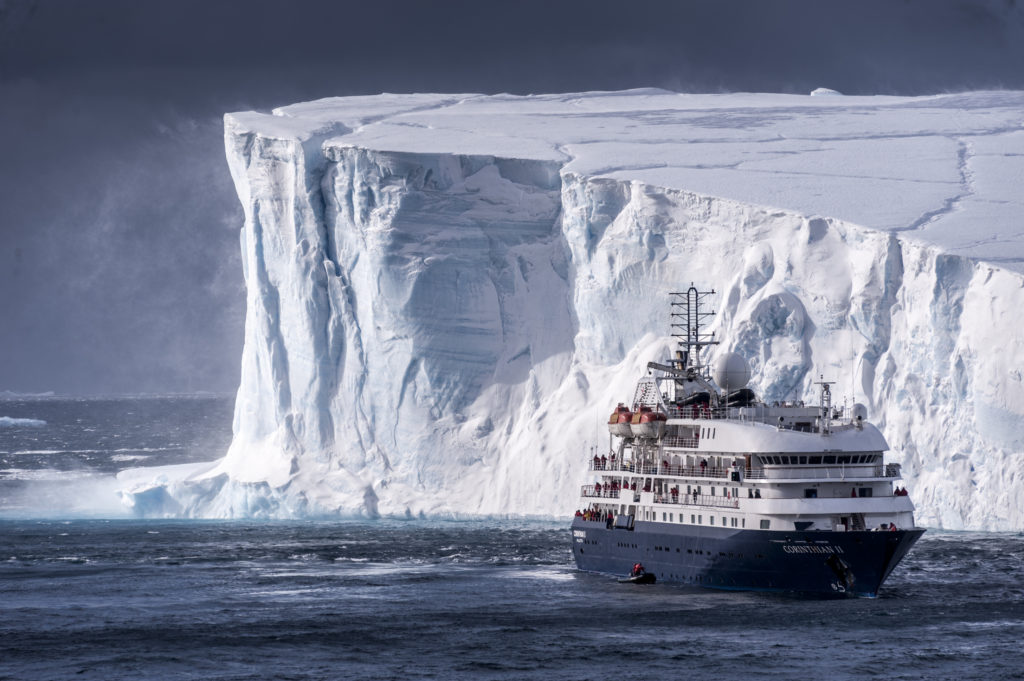
Your eye probably ends up at the ship. It is the focal point of the image. However, to get there, subconsciously your eye will wander through a compositional rule known as the golden spiral. Your eye wanders into the shot from the left. It sees the snow blowing off of the iceberg before moving around the berg to dingy. From the dingy, it continues to ship, the main focal point of the shot.
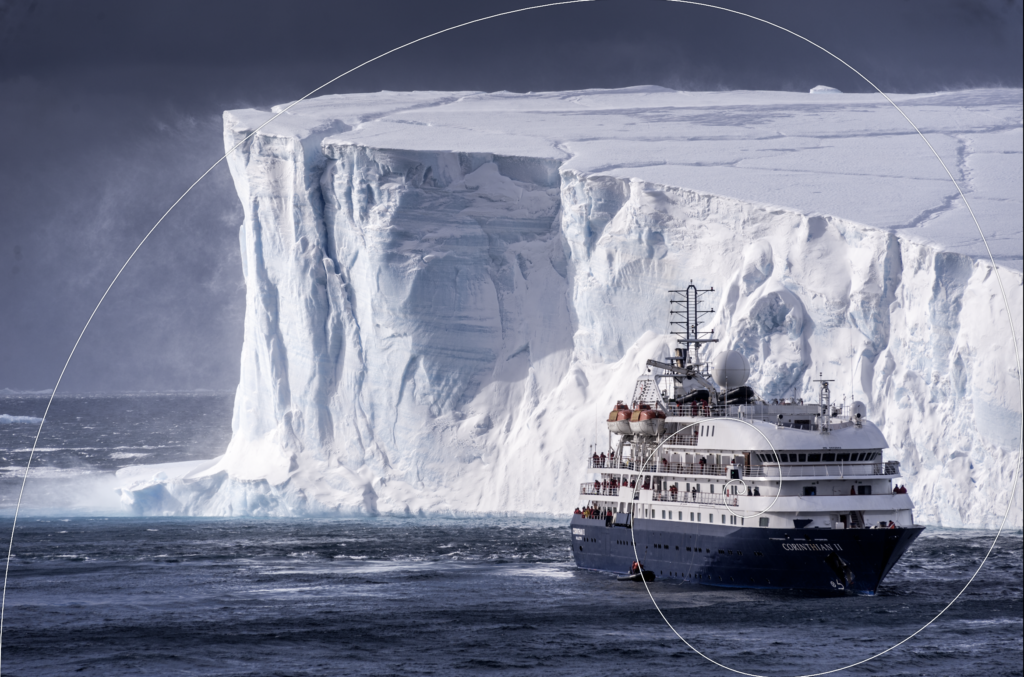
But more than that, like any good story, the journey has thrown up questions. Why is that ship so close to an iceberg? What are those people doing in the dingy? It's a dramatic shot that leaves us with more questions than answers. This is the point of a great photo, it doesn’t always have to have an answer. We can leave that to the viewers' imagination. We simply lay down the questions. Let’s look at another example.
The Preconceived Story
Not all photography is of the moment, often it’s a preconceived idea. The preconception can be planned months in advance or it can come to you in the blink of an eye when you suddenly see a potential shot. Take a look at this image. Does it tell a story?
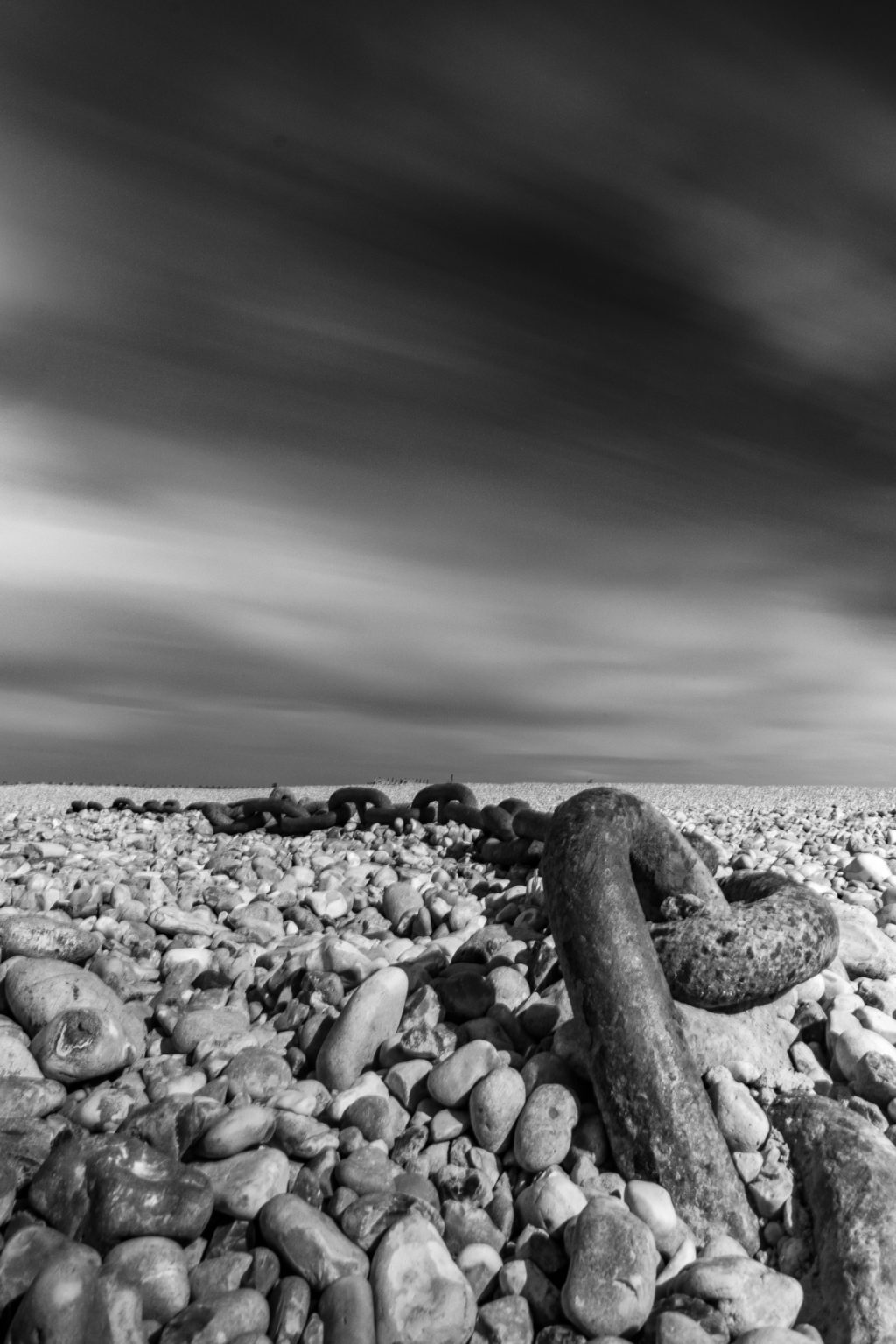
At face value, it’s a picture of a chain on a beach. But if you look closer there is something else going on. The clouds are in motion, suggesting a very long exposure. Any long exposure shot, by its very nature, suggests some preconception, pre-visualization, or a thought process about what you plan to achieve with the shot.
This shot is very much open to interpretation. Some will interpret it the way that I intended. Others will see it in a different way. There will, of course, be some that just see it as a bunch of pretentious mumbo jumbo, and that’s fine. The point of any image is that it’s entirely subjective to any viewer.
So what was my thought process in this shot? What story did I want to tell? Well, at its base level, it’s about time. The chain represents us. Man and the man-made, here for but a short period of time. The motion of the clouds represents the almost endless timeline of nature and Earth. The image is, in my mind, the juxtaposition between the two. Others may read it differently and I would love to hear your views in the comments.
Telling A Story In The Moment
As I mentioned, not all images that tell a story have to be preconceived. It’s quite possible to tell a story with an instinctive photo. In these cases, it’s our subconscious mind creating the story as we take the image. Take a look at this shot.
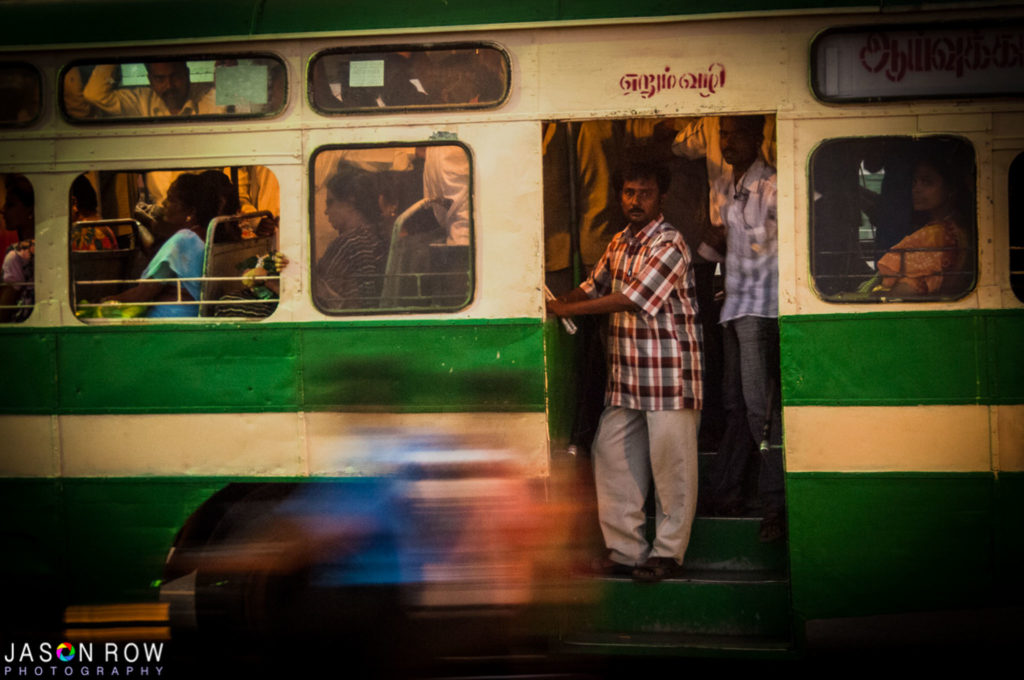
It was taken in Chennai during the evening rush hour. I love the energy and dynamism of India and wanted to capture that in a still image. To do this I used slow shutter speeds and panning, to convey the frenetic feel of the city.
As I was panning along with the traffic I saw this bus. Instantly I thought it would make a good subject, but as I started to pan, I saw the guy at the bus door. I immediately changed my composition to put him on the back third. The two people passing on the motorbike were just sheer luck but overall the combination of all of these elements goes to make up a story. Was the guy going home or perhaps to work? Has he seen me and is wondering why I am shooting him? Why is the motorbike going so fast? None of these questions were preconceived, they were simply elements that came together at the time of the shooting. The only preconception was to capture motion in some way. Here’s another shot in a similar vein and taken a few minutes before.
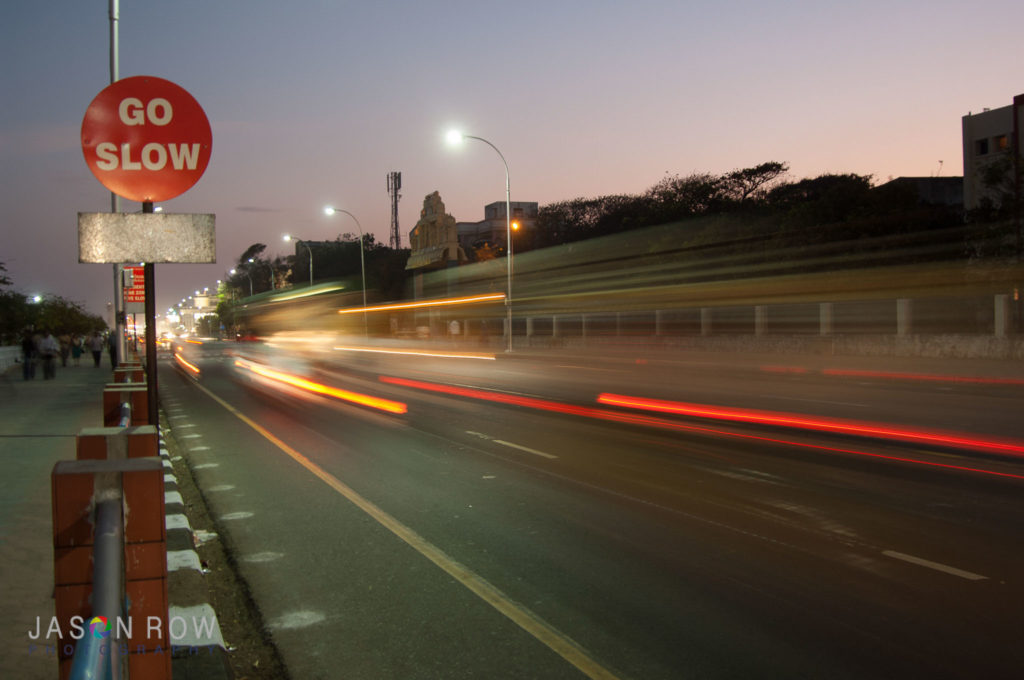
Again the preconception was to capture the frenetic motion. However, the sign gave me a humorous back story. I used a shutter speed slow enough to capture motion in the traffic but high enough to stop the sign from exhibiting camera shake. That ended up telling a story of speeding traffic in Chennai. Perhaps there is a deeper meaning, but again any image is subjective, every viewer will have their own opinions on what is going on.
That is really the crux of telling a story in your images. It’s not so much about having a beginning, middle, and ending. It’s more about making your viewers ask questions. Inspiring them to look deeper into an image, to find meaning in it. If you can do that, then your image has told a story.




